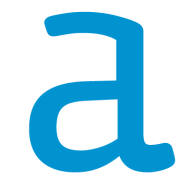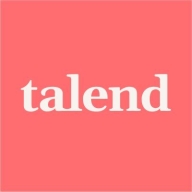

Find out what your peers are saying about Alteryx, SAP, Altair and others in Predictive Analytics.
| Product | Market Share (%) |
|---|---|
| Alteryx | 14.0% |
| Anaplan | 13.8% |
| SAP Analytics Cloud | 12.7% |
| Other | 59.5% |
| Product | Market Share (%) |
|---|---|
| Talend Data Quality | 4.9% |
| Informatica Intelligent Data Management Cloud (IDMC) | 10.8% |
| SAP Data Services | 7.0% |
| Other | 77.3% |


| Company Size | Count |
|---|---|
| Small Business | 31 |
| Midsize Enterprise | 15 |
| Large Enterprise | 51 |
| Company Size | Count |
|---|---|
| Small Business | 9 |
| Midsize Enterprise | 4 |
| Large Enterprise | 4 |
Alteryx can be used to speed up or automate your business processes and enables geospatial and predictive solutions. Its platform helps organizations answer business questions quickly and efficiently, and can be used as a major building block in a digital transformation or automation initiative. With Alteryx, you can build processes in a more efficient, repeatable, and less error-prone way. Unlike other tools, Alteryx is easy to use without an IT background. The platform is very robust and can be used in virtually any industry or functional area.
With Alteryx You Can:
Alteryx Features Include:
Some of the most valuable Alteryx features include:
Scalability, stability, flexibility, fast performance, no-code analytics, data processing, business logic wrapping, scheduling, ease of use, data blending from different platforms, geo-referencing, good customization capabilities, drag and drop functionality, intuitive user interface, connectors, machine learning, macros, simple GUI, integration with Python, good data transformation, good documentation, multiple database merging, and easy deployment.
Alteryx Can Be Used For:
Alteryx Benefits
Some of the benefits of using Alteryx include
:
Reviews from Real Users
"Automation is the most valuable aspect for us. The ability to wrap business logic around the data is very helpful." - Theresa M., Senior Capacity Planner at a financial services firm
"Alteryx has made us more agile and increased the speed and effectiveness of decision making." - Richard F., Director, Digital Experience & Media at Qdoba Restaurant Corporation
"The scheduling feature for the automation is excellent." - Data Analytics Engineer at a tech services company
"The product is very stable and super fast, five-star. It's significantly more stable than its nearest competitor." - Director at a non-tech company
“A complete solution with very good user experience and a nice user interface.” - Solutions Consultant at a tech services company
"There are a lot of good customization capabilities." - Advance Analytics PO at a pharma/biotech company
We monitor all Predictive Analytics reviews to prevent fraudulent reviews and keep review quality high. We do not post reviews by company employees or direct competitors. We validate each review for authenticity via cross-reference with LinkedIn, and personal follow-up with the reviewer when necessary.